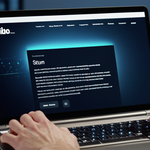
Cookie scanners represent an essential component of modern web privacy compliance infrastructure, enabling website owners to identify, categorize, and manage the tracking technologies deployed across their digital properties. These automated tools perform systematic scans of websites to detect cookies and related tracking mechanisms, generating detailed reports that reveal the extent of data collection activities occurring on a domain. By automating the discovery and analysis of cookies, scanners provide website administrators with critical information necessary for understanding their privacy obligations under regulations such as the General Data Protection Regulation (GDPR), the California Consumer Privacy Act (CCPA), and other evolving privacy frameworks. The ability to accurately read and interpret cookie scanner results has become indispensable for organizations seeking to demonstrate compliance, protect user privacy, and maintain user trust in an increasingly privacy-conscious digital landscape. This report provides a comprehensive examination of cookie scanner functionality, report interpretation methodologies, and the practical implications of scan results for website compliance and privacy management.
The Evolution and Necessity of Cookie Scanning Technology
Historical Context and Regulatory Drivers
The emergence of cookie scanning technology reflects the growing complexity of web tracking ecosystems and the regulatory pressure demanding transparency around data collection practices. Prior to the implementation of GDPR in 2018, many website owners operated with minimal awareness of the actual cookies and tracking mechanisms deployed on their sites, particularly those installed by third-party vendors and service providers. The regulatory environment fundamentally shifted when GDPR and subsequent privacy laws mandated that websites obtain explicit user consent before deploying non-essential tracking technologies. This regulatory requirement created an immediate need for tools capable of identifying and cataloging the complete array of cookies and trackers present on websites, as website owners could no longer rely on manual inspection or incomplete vendor documentation to understand their tracking infrastructure.
Cookie scanners emerged as a direct response to this regulatory imperative, providing automated solutions to the complex task of cookie discovery and categorization. The technology represents an evolution from basic cookie detection methods, which were often manual and incomplete, to sophisticated automated systems capable of simulating browser behavior, executing JavaScript, and identifying cookies deployed through various mechanisms including tag managers and delayed loading scenarios. This technological advancement has paralleled the increasing sophistication of web tracking itself, as advertisers and analytics providers have developed more complex methods of deploying cookies across websites, frequently obscuring the sources and purposes of tracking mechanisms.
The Importance of Regular Scanning in Compliance
The regulatory landscape has established that website owners bear responsibility for understanding and managing all cookies deployed on their sites, regardless of whether those cookies are deployed directly by the organization or through third-party vendors and service providers. This responsibility extends beyond a single point-in-time audit, requiring ongoing monitoring as websites evolve, new tools are integrated, and third-party services update their cookie usage practices. Most cookie scanner platforms address this requirement by implementing automated monthly scanning cycles that continuously monitor websites for changes in their cookie footprints. This periodic scanning approach enables website owners to maintain current cookie inventories and identify when new cookies have been introduced, either intentionally through new service integrations or inadvertently through vendor updates.
The regulatory requirement for maintaining accurate and current cookie documentation creates a persistent necessity for ongoing cookie scanning. Website owners cannot satisfy compliance obligations through a single audit but must instead maintain living documentation of their cookie usage that reflects the actual state of their digital properties at any given time. This requirement has transformed cookie scanning from an occasional compliance task into a continuous operational necessity, with many modern compliance frameworks incorporating regular cookie scanning as a core component of their risk management and compliance monitoring procedures.
How Cookie Scanners Operate: Technical Processes and Mechanisms
The Fundamental Scanning Architecture
Cookie scanners employ a standardized multi-stage process to identify and catalog cookies across websites, beginning with URL submission and progressing through automated crawling, JavaScript execution, delayed cookie detection, and finally comprehensive reporting. The basic workflow initiates when a website administrator provides a domain URL to the scanning service, which then deploys automated robots to systematically traverse the website’s pages and collect data about all cookies encountered. These scanning robots are specifically designed to mimic the behavior of standard web browsers, interpreting HTML code, loading images, and executing JavaScript functions in the same manner that a user’s browser would when visiting the website.
The scanning architecture respects website-specific directives that govern automated access, particularly the robots.txt file which provides instructions regarding which areas of a website automated systems should or should not access. This architectural consideration demonstrates that legitimate cookie scanners are designed to operate as responsible web clients that respect website owners’ preferences regarding automated access to their properties. By adhering to these directives, scanners can identify most cookies while demonstrating respect for the website owner’s traffic management preferences, creating a balance between comprehensive scanning and appropriate resource usage.
The Multi-Stage Detection Process
The cookie detection process unfolds across several discrete stages, each targeting different categories of cookies and tracking mechanisms based on how they are deployed. The first stage of detection occurs during the initial page load, where the scanner captures all cookies that are set by the web server through HTTP headers and responses. These server-side cookies represent the foundational tracking layer and are typically the easiest to detect, as they are explicitly sent to the browser through standard HTTP mechanisms. This initial detection phase captures cookies deployed directly by the website’s own servers as well as first-party cookies associated with the primary domain.
The second stage of detection occurs after JavaScript execution, where the scanner captures cookies that are deployed through client-side JavaScript code. This represents a critical phase because many modern tracking technologies, particularly those deployed through tag managers and third-party marketing platforms, rely on JavaScript to dynamically create and set cookies rather than relying on traditional server-side mechanisms. By executing JavaScript code in the same manner that a user’s browser would execute it, scanners can identify cookies that would be invisible to simpler detection methods that only analyze HTML and HTTP responses.
The third detection phase represents perhaps the most technologically sophisticated aspect of cookie scanning: the detection of delayed cookies that are deployed with a time delay following page load. These delayed cookies present a particular challenge because they are not set immediately when the page loads but rather activate after a specified interval, often measured in hundreds of milliseconds or even several seconds. Many modern advertising and analytics platforms intentionally deploy cookies with delays as part of their tracking architecture, potentially to allow time for users to close popup windows or leave pages before deploying tracking identifiers. Cookie scanners address this challenge by maintaining scanning sessions for extended periods following the initial page load, allowing sufficient time for delayed cookies to be deployed and captured.
Advanced Detection Capabilities and Cookie Intelligence
Beyond basic cookie detection, sophisticated cookie scanners incorporate intelligent analysis capabilities that enhance the value of their scanning results. One critical capability involves the automatic detection and categorization of cookies with unique or randomized identifiers, which represents a particular challenge because the same cookie deployed across multiple scans might appear to be different cookies if the names or values change with each deployment. By identifying patterns in cookie naming conventions, scanners can recognize that cookies with superficially different names are actually the same cookie, preventing artificial inflation of cookie counts and ensuring accurate tracking of cookie usage patterns across time.
Modern cookie scanners also incorporate sophisticated pattern recognition capabilities that identify cookies deployed through content management systems and other platforms that generate session cookies with randomized components. For example, e-commerce platforms like WooCommerce generate session cookies with names that include random identifiers, making it appear that a new cookie is deployed with each user session. By recognizing these patterns and cataloging them as session cookies rather than listing them individually, scanners provide more meaningful and actionable reporting that reflects the actual configuration of the website’s cookie infrastructure.
The integration of comprehensive cookie databases represents another crucial component of cookie scanner technology. These databases catalog known cookies from major analytics platforms, advertising networks, and other common tracking services, enabling scanners to automatically assign categories and purposes to identified cookies. When the scanner encounters a cookie that matches entries in this database, it can immediately assign the appropriate category and provide purpose descriptions without requiring manual research or classification by the website owner. This database-driven approach significantly reduces the manual effort required to interpret scan results and ensures consistency in cookie categorization across websites.
Understanding Cookie Scanner Reports: Key Metrics and Data
Report Structure and Executive Summaries
Cookie scanner reports typically present scanning results through a structured format that begins with executive summary information providing high-level metrics about the scanning session and the website’s cookie footprint. The summary section includes critical data points such as the scan date, domain name, server location, and the total count of cookies detected. These summary metrics provide website administrators with immediate context regarding when the scan was performed, geographic location of the hosting infrastructure, and the overall scale of the cookie implementation. Additional summary information may include the number of pages that were scanned, the duration of the scanning session, and the detection status of compliance tools such as cookie consent management platforms.
Beyond the executive summary, comprehensive scanner reports provide detailed breakdowns of detected cookies organized by category, compliance status, and other relevant dimensions. The categorical organization typically reflects standard privacy regulatory frameworks, with cookies classified as strictly necessary, preferences, analytics, marketing, or uncategorized depending on their identified purpose and functionality. This categorical breakdown enables website administrators to quickly understand the composition of their website’s cookie infrastructure and identify which types of tracking activities are occurring on their sites.
Detailed Metrics on Cookie Inventory
Comprehensive cookie reports provide granular information about each detected cookie, including the cookie name, the hostname or domain under which the cookie is set, the cookie’s lifespan or expiration period measured in days, and various technical attributes that characterize the cookie’s properties. The hostname information is particularly valuable because it identifies whether the cookie is set by the website’s primary domain (indicating a first-party cookie) or by external domains (indicating third-party cookies). This distinction carries important regulatory implications, as many privacy regulations impose different consent and transparency requirements on first-party versus third-party cookies.
The cookie lifespan information provides insights into the intended duration of tracking, with long-living cookies that persist for months or years generally indicating tracking cookies, while short-lived cookies often serve functional purposes such as maintaining session state. The technical attributes recorded in detailed reports include flags such as HTTPOnly, Secure, and SameSite designations that indicate specific security and privacy protections applied to the cookie. The HTTPOnly flag indicates that the cookie cannot be accessed through JavaScript, providing protection against cross-site scripting attacks. The Secure flag indicates that the cookie will only be transmitted over HTTPS connections, preventing interception on unencrypted connections. The SameSite attribute restricts when the cookie is transmitted, providing protection against cross-site request forgery attacks.
Technology Stack and Vendor Identification
Advanced cookie scanner reports include identification of the technology stack present on the website, identifying which platforms, services, and tracking vendors have deployed cookies on the site. This technology identification capability provides valuable context for interpreting cookies, as it enables administrators to understand which vendors are responsible for specific cookies and to evaluate whether those vendor relationships remain desirable. The vendor identification process leverages databases of known services and their associated cookies, enabling the scanner to recognize cookies deployed by major platforms such as Google Analytics, Facebook Pixel, Shopify, and countless other services.
The vendor identification capability proves particularly valuable in complex environments where multiple vendors have deployed cookies and tracking mechanisms, potentially creating confusion about the actual sources of tracking activities. By systematically identifying all detected vendors, scanner reports provide transparency regarding which third parties have gained access to user data through cookies deployed on the website. This visibility enables website administrators to make informed decisions about vendor relationships, evaluating whether the value provided by each vendor justifies the privacy implications of the tracking they implement.
Page-Level Detail and Cookie Distribution
Detailed cookie scanner reports typically include information about which specific pages were scanned and what cookies were detected on each page. This page-level granularity proves valuable because cookies are not uniformly deployed across websites; instead, different pages and sections often deploy different cookies based on their specific functionality and purpose. For example, checkout pages may deploy payment-related cookies, blog pages may deploy comment system cookies, and marketing pages may deploy retargeting cookies. By reporting cookies at the page level, scanners enable administrators to understand the cookie infrastructure in different sections of their website and to evaluate whether cookie deployment patterns are appropriate for the content and functionality of different pages.
The page-level reporting also helps identify when cookies are deployed across a wider range of pages than might be necessary, indicating potential over-deployment of tracking technologies. If a retargeting cookie is deployed on every page of a website including internal administrative pages that should not be accessible to potential customers, this pattern might indicate misconfiguration or overly broad cookie deployment. By examining page-level cookie distribution, administrators can identify such anomalies and take corrective action to align cookie deployment with business needs and privacy objectives.
Cookie Categorization and Classification Systems
Standard Cookie Categories and Their Definitions
Cookie scanner reports organize detected cookies into standard categories that reflect their functionality and purpose, providing a consistent classification system that facilitates comparison and analysis across different websites and scanning tools. The strictly necessary category encompasses cookies that are essential for the website to function, enabling basic operations such as maintaining session state, preventing fraud, and enabling core functionality. Cookies in this category typically do not require explicit user consent under privacy regulations such as GDPR because they serve essential operational functions rather than supporting tracking or personalization.
The preferences category includes cookies that remember user selections and settings, such as language preferences, display settings, and other user-initiated choices that enhance the website experience. These cookies support convenience and personalization functionality while generally not supporting behavioral tracking across multiple websites. The analytics category encompasses cookies deployed by analytics platforms to track user interactions with the website, including page views, scrolling behavior, time spent on pages, and navigation paths. Analytics cookies support business intelligence activities that help website owners understand how users interact with their websites and identify opportunities for improvement.
The marketing category includes cookies deployed by advertising networks and retargeting platforms to track users across multiple websites and to deliver targeted advertising based on browsing behavior. These cookies typically transfer user data to external advertising platforms and support the creation of detailed user profiles based on cross-site browsing activity. The uncategorized category encompasses cookies that the scanner has detected but cannot definitively classify because the cookies do not match entries in the scanner’s cookie database and their purposes cannot be automatically determined. These unclassified cookies represent cookies that remain to be manually reviewed and categorized by website administrators or cookie specialists.

Manual Classification Requirements and Procedures
Cookie scanners cannot always automatically categorize detected cookies, particularly when cookies are custom-developed for specific websites or when third-party vendors have deployed proprietary cookies not documented in standard cookie databases. In these situations, the detected cookies are assigned to the uncategorized category pending manual classification by website administrators or compliance specialists. The manual classification process requires investigating the purpose and functionality of each unclassified cookie through various methods including reviewing website code, consulting with website developers or vendors, and researching vendor documentation.
Website administrators conducting manual classification should examine the initiator information from the scan report, which identifies what component of the website set the specific cookie, such as server-side code, JavaScript tags, or embedded content. For first-party cookies, website developers and administrators typically know the cookie’s purpose because they developed the functionality that deployed the cookie. For third-party cookies, administrators may need to contact the vendor that deployed the cookie to understand its purpose and functionality. Through systematic research and vendor consultation, administrators can classify previously unclassified cookies and create comprehensive documentation of their website’s cookie infrastructure.
Database Updates and Evolving Classifications
Cookie scanner providers maintain and continuously update their cookie databases to incorporate new cookies and evolving classifications as tracking technologies advance. This ongoing maintenance addresses the reality that vendors continuously modify their tracking implementations, adding new cookies and deprecating old ones as their platforms evolve. Monthly updates to scanner databases ensure that classifications remain current and reflect the latest information about known cookies. This approach acknowledges that cookie scanning is not a static problem amenable to a single solution but rather a dynamic environment requiring continuous adaptation to maintain accuracy and relevance.
Website administrators benefit from these database updates because cookies that were previously uncategorized may become classified when vendors provide documentation or when scanner providers recognize previously unknown cookies. This evolutionary approach to cookie classification means that scan results become more accurate and complete over time, even for websites with unchanged cookie deployments, as the scanner’s underlying knowledge base improves and expands.
Interpreting Compliance Issues and Regulatory Implications
Critical Compliance Findings in Scanner Reports
Cookie scanner reports typically flag specific compliance issues that require attention and remediation to ensure regulatory compliance. Among the most serious compliance issues identified by scanners is the detection of cookies being deployed before obtaining user consent, which violates fundamental GDPR principles that restrict the deployment of non-essential cookies until users provide affirmative consent. Many scanners identify this issue by detecting whether tracking scripts and cookies are deployed on the initial page load or are deferred until after the consent management platform has recorded user consent choices. When scanners identify cookies deployed without prior consent, they flag this as a critical compliance issue requiring immediate remediation.
Another significant compliance issue involves cookies that are transferred to jurisdictions deemed inadequate under GDPR, such as the United States, which lacks privacy protections deemed equivalent to European standards. When scanner reports indicate that cookies are transferred to non-adequate countries, website administrators must typically obtain explicit user consent specifically addressing this cross-border data transfer, acknowledging the different privacy protections available in the destination country. Data transfer adequacy represents a complex regulatory area that extends beyond the scope of simple compliance checklists, but cookie scanners identify this issue to alert administrators to the need for additional legal review and compliance measures.
Consent Configuration Verification
Scanner reports evaluate whether websites have properly configured consent mechanisms to ensure that tracking technologies respect user consent choices. Specifically, scanners verify that analytics cookies, marketing cookies, and other tracking technologies are configured to require user consent before deploying, meaning they should not execute until after the website’s consent management platform records that users have provided consent for those categories. When scanners identify tracking technologies that execute regardless of user consent status, they flag this as a “not blocked until accepted by user” issue requiring remediation.
This consent configuration verification proves critical because many websites implement consent management platforms without properly configuring tracking technologies to respect those consent choices. For example, a website might deploy a cookie consent banner but fail to configure Google Analytics or Facebook Pixel to wait for consent before executing, leaving the tracking technologies active regardless of user consent status. Scanners identify these misconfigurations by examining whether tracking scripts execute prior to consent and flag these situations as compliance failures requiring technical remediation.
Privacy Policy and Cookie Documentation Requirements
Many cookie scanners verify whether websites meet fundamental transparency and documentation requirements by checking for the presence of privacy policies and cookie policy pages that inform users about cookie usage. Scanners examine website sitemaps and navigate to typical privacy-related URLs to determine whether these required documents exist and are accessible to users. The presence of compliant privacy and cookie policies represents a foundational requirement of privacy regulations, as users cannot provide informed consent without understanding what data is collected and how it will be used.
Beyond simply verifying the existence of privacy policies, some scanners evaluate whether policies contain the specific information required by privacy regulations, such as descriptions of cookie purposes, categories, and retention periods. This document verification capability helps identify websites that have privacy policies but whose policies do not adequately disclose cookie usage, potentially leaving administrators exposed to compliance violations despite having implemented privacy documentation.
Advanced Report Features and Detailed Analysis
Initiator Analysis and Cookie Source Identification
Advanced cookie scanner reports provide detailed initiator analysis that identifies what component of the website set each cookie, enabling administrators to trace cookies to their sources and implement targeted remediation. The initiator information identifies whether the cookie was set by the web server, by JavaScript code, by an embedded iframe, by an image tag, or through other mechanisms. For script-based cookies, initiator information may include the specific line number in the HTML or JavaScript where the setting code appears, enabling developers to locate and modify the relevant code.
When cookies are set through complex chains of processes, such as cookies deployed through tag managers, the initiator analysis traces through the chain to identify the ultimate source of the cookie deployment. This chain tracing proves valuable when debugging cookie configuration problems or removing unwanted cookies, as it enables administrators to identify exactly where in their technical stack the cookie is being set and thus where remediation should occur. For example, if a cookie is being deployed through Google Tag Manager, the initiator information would identify the specific tag within GTM that is deploying the cookie, enabling targeted remediation without affecting other tags within the tag manager.
Scan Metadata and Technical Performance Indicators
Cookie scanner reports include metadata about the scanning process itself, such as the scan duration, the number of pages scanned, the number of domains and subdomains examined, and any technical issues encountered during scanning. This metadata provides important context for interpreting scan results, as it indicates the completeness and reliability of the scanning process. A scan that examined only 50 pages on a website with thousands of pages might not have discovered all cookies, as certain cookies might only be deployed on pages not included in the limited scan.
The scan metadata also indicates whether all areas of the website were successfully scanned or whether certain areas could not be accessed due to technical issues such as security restrictions, captcha challenges, or SSL certificate problems. This information helps administrators understand whether scan results represent a complete picture of website cookies or whether additional scanning or manual investigation might be necessary to ensure complete cookie discovery.
Implementation Verification and Configuration Status
Advanced cookie scanner reports verify whether cookie consent management platforms have been properly implemented on websites, checking whether the platform code is present, whether it is properly configured, and whether it is functioning correctly. This verification proves important because website administrators often implement consent management platforms but misconfigure them in ways that prevent proper functioning. The scanner report indicates the implementation method used (such as direct code implementation, plugin installation, or tag manager integration) and flags any detected discrepancies that might prevent proper functionality.
The configuration status verification also checks whether the consent management platform has been configured with the correct domain settings, whether it has been configured to share consent across subdomains appropriately, and whether the cookie consent banner is displaying properly to website visitors. By verifying these implementation details, scanner reports help identify technical issues that might prevent the consent management platform from functioning as intended, potentially leaving the website in a non-compliant state despite having supposedly implemented a compliance solution.
Practical Application of Scan Results for Website Compliance
Creating Action Plans from Scan Results
Effective use of cookie scanner results requires translating the identified findings into concrete action plans that address compliance gaps and remediate non-compliant practices. Website administrators should categorize identified issues into categories such as critical compliance violations requiring immediate remediation, medium-priority issues requiring attention within a specified timeframe, and lower-priority recommendations for future optimization. Critical issues such as tracking cookies deployed without consent should typically be remediated within days or weeks, while medium-priority issues such as uncategorized cookies might be addressed within monthly cycles.
The action plan should assign specific remediation tasks to appropriate team members based on their expertise and responsibilities. Technical issues such as cookies deployed through tag managers might be assigned to the digital marketing team or tag management specialists, while vendor-related issues such as third-party cookies might be assigned to the vendor management team to evaluate whether vendor relationships remain appropriate given their cookie usage patterns. By creating systematic action plans tied to scan results, organizations transform compliance scanning from a passive reporting activity into an active management process that drives continuous improvement in privacy practices.
Vendor Management and Third-Party Cookie Decisions
Cookie scanner results frequently identify cookies deployed by multiple third-party vendors, providing an opportunity to evaluate whether all vendor relationships continue to serve business objectives at acceptable privacy costs. When scanner results identify cookies deployed by vendors whose services are no longer actively used, this represents an opportunity to remove unnecessary vendors and reduce the website’s tracking footprint. Conversely, for vendors whose services continue to provide value, scan results enable administrators to verify that vendor implementations are correctly configured to respect user consent choices.
The identification of vendor-specific cookies in scanner results facilitates conversations with vendors about their cookie usage, allowing administrators to request modifications to vendor implementations if tracking appears excessive or if vendors have deployed additional tracking without authorization. Some vendors provide mechanisms for configuring which cookies they deploy, allowing website administrators to disable specific tracking features if they determine that particular vendor capabilities are not needed. By systematically evaluating vendor-deployed cookies through the lens of business necessity and user privacy impact, organizations can optimize their vendor ecosystems to minimize unnecessary tracking while maintaining access to needed functionality.
Cookie Consent Banner Configuration Based on Scan Results
Cookie scanner results directly inform the configuration of cookie consent banners and cookie policies, as the identified cookies must be included in the banner’s category structure and the policy’s documentation. The categories identified in scan results should be reflected in the consent banner, with users provided options to accept or reject cookies by category as identified by the scanner. If the scanner identifies cookies in the analytics, marketing, and preferences categories, the consent banner should provide granular controls allowing users to independently accept or reject each of these categories.
The detailed cookie information from scan results should be integrated into the website’s cookie policy documentation, with the policy listing identified cookies, explaining their purposes, and disclosing their retention periods. This documentation should be updated whenever scan results identify new cookies or changes to existing cookie implementations, ensuring that cookie policy documentation remains synchronized with actual cookie deployments. By tightly integrating scan results into consent configuration and policy documentation, organizations ensure that their compliance implementations remain current and accurately reflect their actual practices.

Ongoing Monitoring and Scan Scheduling
Cookie scanner results should inform the scheduling of ongoing scanning activities to ensure continuous compliance monitoring. Many cookie scanner platforms implement automated monthly scanning as part of their standard service, but website administrators should understand the scanner configuration and potentially adjust scan scheduling based on their website’s specific characteristics and change frequency. Websites that frequently add new tools and services might benefit from more frequent scanning, such as bi-weekly or weekly scanning, to detect new cookies quickly and verify that new implementations respect user consent choices.
Conversely, websites with stable technology stacks and infrequent changes might operate effectively with standard monthly scanning, ensuring that any vendor-driven cookie changes are detected and addressed without the administrative burden of more frequent scanning. By strategically configuring scan scheduling based on website characteristics and change frequency, organizations can maintain effective compliance monitoring without excessive administrative overhead.
Limitations and Challenges in Cookie Scanning
Technical Limitations in Cookie Detection
Despite their sophistication, cookie scanners operate within technical limitations that can result in incomplete cookie detection, particularly on complex websites with sophisticated security measures or dynamic content generation. Many websites implement security technologies such as captcha systems and firewalls designed to prevent automated access, which inadvertently block cookie scanners from accessing and scanning all pages of the website. When scanners encounter these security barriers, they cannot complete their scans, potentially missing cookies deployed on pages that could not be accessed.
Website infrastructure issues can similarly impede effective scanning, including SSL certificate problems, server errors, and website downtime during scheduled scanning windows that can prevent scanners from accessing website content. Additionally, websites hosted behind restrictive security configurations or IP-based access controls may not recognize scanner IP addresses, preventing scanner access to website content. Website administrators should be aware that scanner limitations might result in incomplete cookie detection and should consult scanner status information to understand whether technical issues affected scan completeness.
Dynamic Content and Session-Based Cookies
Modern websites frequently employ dynamic content generation and session-based systems that create challenges for cookie scanning processes. Content management systems often generate session cookies with randomized components, making it difficult for automated processes to determine whether each detected session cookie represents a unique cookie or a variant of the same cookie deployed across different sessions. While sophisticated scanners attempt to address this challenge through pattern recognition, some systems might deploy sufficiently complex session cookie schemes that even advanced scanning technologies struggle to categorize cookies appropriately.
Additionally, websites that serve significantly different content to different users based on authentication status, geolocation, or other user characteristics present scanning challenges because a single scan might detect only the subset of cookies deployed to that particular scanner session. If cookies are deployed conditionally based on user characteristics, and the scanner impersonates a particular class of users, it might miss cookies deployed to other user classes. Website administrators should be aware of these dynamic content challenges and might need to conduct additional manual verification to ensure complete cookie discovery on websites with sophisticated content generation systems.
Database Limitations and Unclassified Cookies
Even sophisticated cookie scanners with comprehensive databases cannot automatically classify all detected cookies, particularly when websites deploy custom-developed cookies or when vendors deploy proprietary cookies not yet documented in scanner databases. The rate at which vendors introduce new cookies typically exceeds the rate at which scanner providers can document and classify those cookies, resulting in persistent backlogs of unclassified cookies in scanner reports. Website administrators must be prepared to manually research and classify these unclassified cookies, which can represent significant administrative effort on complex websites with hundreds of cookies.
The challenge of unclassified cookies is perpetual rather than episodic, as vendors continuously modify their implementations and introduce new cookies that will remain unclassified until scanner database updates document them. This reality means that cookie compliance management represents an ongoing operational activity rather than a task that can be completed once and then forgotten, requiring continuous attention to newly detected cookies and periodic manual classification efforts.
Geographic and Jurisdictional Variations
Cookie scanners operate within a regulatory landscape characterized by significant variation across jurisdictions, with different privacy regulations imposing different requirements regarding cookie classification, consent, and disclosure. While scanners typically focus on GDPR and CCPA compliance, websites serving users in multiple jurisdictions might need to comply with different standards in different regions. Some scanners provide limited functionality for adapting to jurisdiction-specific requirements, potentially leaving website administrators with responsibility for conducting additional compliance analysis beyond what scanners provide.
The complexity of complying with multiple jurisdictional requirements means that cookie scanner results should be viewed as the starting point for compliance analysis rather than the complete compliance solution, particularly for websites serving international audiences subject to multiple regulatory frameworks.
Best Practices for Acting on Cookie Scanner Results
Establishing Cookie Governance Frameworks
Organizations should establish formal cookie governance frameworks that position cookie scanning as part of a broader privacy management system rather than as an isolated compliance task. Effective governance frameworks should define roles and responsibilities for different organizational functions involved in cookie management, such as technical teams responsible for implementing cookie consent technologies, marketing teams responsible for vendor selection and integration, and legal teams responsible for privacy policy documentation.
Governance frameworks should establish processes for reviewing scan results, evaluating identified issues, prioritizing remediation efforts, and documenting completed remediation activities. By formalizing these processes within governance structures, organizations ensure that cookie scanning results translate into consistent action rather than remaining as reports that are reviewed and then archived. Clear governance frameworks also enable organizations to allocate appropriate resources to cookie management, ensuring that compliance responsibilities are neither overlooked nor excessively resource-intensive.
Documentation and Record Keeping
Effective use of cookie scanner results requires systematic documentation of scan results, identified issues, remediation actions, and verification of completed remediation activities. Organizations should maintain comprehensive records of cookie scans and their results, creating an audit trail that demonstrates the organization’s ongoing attention to cookie compliance and its systematic approach to addressing identified issues. This documentation proves valuable for regulatory inquiries, as it demonstrates that the organization has implemented appropriate processes for identifying and managing cookies.
Documentation should include evidence that cookie categories have been verified to accurately reflect cookie purposes, that users have been provided with accurate information about cookies through privacy policies and consent banners, and that tracking technologies have been configured to respect user consent choices. By maintaining comprehensive documentation, organizations create evidence of their compliance efforts that can be presented to regulators if compliance questions arise.
User Experience Optimization and Consent Rates
While cookie scanning focuses on technical compliance, the practical effectiveness of compliance efforts depends on user experience design that encourages meaningful user participation in consent processes. Scanner results should inform cookie consent banner design that explains cookie purposes in user-friendly language rather than relying on technical terminology that many users will not understand. By presenting cookies organized by purpose and category, rather than as a list of technical names and values, organizations can help users make informed consent decisions.
The design of cookie consent mechanisms should balance compliance requirements against user experience goals, recognizing that overly complex or burdensome consent processes might discourage user engagement, defeating the purpose of obtaining meaningful user consent. Cookie scanner results can identify opportunities to simplify cookie implementations by removing unnecessary cookies, reducing the number of cookies that require user consent and thus simplifying the consent process that users encounter. By using scanner results to both ensure compliance and to identify opportunities to reduce tracking to the minimum necessary, organizations can achieve both compliance and user experience objectives.
Reading Between the Lines of Your Cookie Scan
Synthesis of Cookie Scanner Value and Limitations
Cookie scanners have emerged as essential tools for website privacy compliance, automating the complex and resource-intensive task of identifying and cataloging the cookies and tracking technologies deployed on websites. These technologies provide website administrators with comprehensive visibility into their websites’ tracking ecosystems, translating complex technical infrastructure into actionable reports that support informed decision-making about privacy and compliance priorities. By systematically identifying cookies, categorizing them according to their purposes, and flagging potential compliance issues, scanners democratize cookie management, making sophisticated privacy analysis accessible to organizations that lack deep privacy expertise on staff.
However, cookie scanners should be understood as tools that initiate compliance processes rather than as complete compliance solutions that automatically resolve privacy obligations. The accuracy of scanner results depends on numerous factors including website technical characteristics, scanner configuration, and the comprehensiveness of underlying cookie databases. Effective cookie compliance requires combining scanner automation with human judgment about regulatory requirements, business objectives, and user privacy expectations. The ultimate responsibility for cookie compliance remains with website owners who must interpret scanner results within their specific regulatory contexts, apply appropriate business judgment to prioritization decisions, and verify that identified issues have been appropriately remediated.
The Evolving Regulatory and Technical Landscape
The cookie compliance landscape continues to evolve rapidly, with regulatory frameworks becoming increasingly sophisticated while simultaneously technology platforms develop new mechanisms for tracking and personalization. The impending phase-out of third-party cookies as implemented by major browser vendors such as Google Chrome represents a fundamental shift in tracking technology, potentially reducing the relevance of traditional third-party cookie tracking while simultaneously increasing reliance on alternative tracking mechanisms such as first-party data collection, server-side tracking, and advanced fingerprinting techniques. Cookie scanners will likely need to evolve to detect and categorize these emerging tracking mechanisms, extending their scope beyond traditional cookies to encompass the full spectrum of tracking technologies.
The increasing sophistication of privacy regulations, with jurisdictions beyond Europe implementing GDPR-inspired frameworks that impose comparable requirements for transparency, consent, and user rights, will likely expand the demand for cookie scanning technologies. As regulations become more detailed and impose more specific requirements regarding cookie categorization, consent design, and documentation, cookie scanner platforms will face pressure to provide increasingly sophisticated functionality that addresses regulatory subtleties that current scanners might overlook.
Continuous Improvement and Proactive Privacy Management
Organizations that effectively utilize cookie scanner results recognize that privacy compliance represents an ongoing operational responsibility rather than a periodic audit activity. Forward-thinking organizations establish processes for continuous monitoring of cookie implementations, regular scanning with prompt remediation of identified issues, and proactive evaluation of new tools and vendors before deploying them on production websites. By shifting from reactive compliance approaches that address identified violations to proactive privacy management that prevents violations from occurring, organizations can achieve more sustainable compliance while simultaneously building user trust through demonstrated commitment to privacy practices.
The ultimate value of cookie scanner technology extends beyond formal compliance to encompass the opportunity to optimize relationships with users through enhanced privacy practices. By using scanner results to identify and eliminate unnecessary tracking, organizations can reduce the invasiveness of their digital properties while maintaining access to analytical and personalization capabilities needed for business operations. This balanced approach to privacy management, informed by systematic scanning and analysis, represents the most mature approach to cookie governance available to digital organizations operating in contemporary regulatory environments characterized by heightened privacy expectations from both users and regulators.
Protect Your Digital Life with Activate Security
Get 14 powerful security tools in one comprehensive suite. VPN, antivirus, password manager, dark web monitoring, and more.
Get Protected Now





